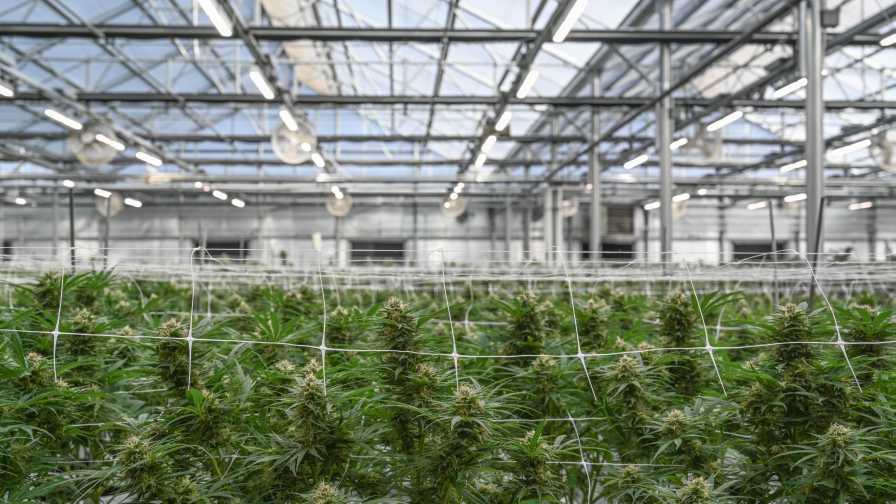Unpacking Utility Rebates and Incentives for Greenhouse Cannabis
 The number-one question I receive from growers is, “Why does the utility want to pay me to use them less?” Rebates and incentive programs may seem a bit counterintuitive at first, but they make sense when you look at everything an electrical utility must contend with, including its top goal: Keeping the proverbial and literal lights on.
The number-one question I receive from growers is, “Why does the utility want to pay me to use them less?” Rebates and incentive programs may seem a bit counterintuitive at first, but they make sense when you look at everything an electrical utility must contend with, including its top goal: Keeping the proverbial and literal lights on.
With an ever-growing demand for electricity, there are only two ways for utilities to solve the issue, and they both harken back to economics 101: Increase the supply or decrease the demand. Energy efficiency programs at utilities fall into the latter, with what’s known in the energy industry as “demand-side management.”
The reason why utilities choose this route is simple: Energy efficiency is the cheapest form of new energy. The American Council for an Energy-Efficient Economy (ACEEE) does great work demonstrating that it’s much cheaper for utilities to incentivize customers to reduce their electrical use than it is for them to generate more power (whether through renewable energy or fossil fuels).
While the rationale for offering utility rebates is established and well understood, using energy-efficient technology, such as LED lighting for horticulture, is still a relatively new way to unlock savings. Since rebates are not as well understood, most incentive projects are handled on a custom basis. Contributing to the confusion is the cannabis industry’s nascency — the market still lacks industry standards for lighting applications on which utilities can consistently rely.
The first stop on your utility rebate journey should be with the DesignLights Consortium, which promotes high-quality, energy-efficient lighting products in collaboration with utilities and energy efficiency program members, manufacturers, lighting designers, and federal, state, and local entities. Use the organization’s qualified products list (QPL) to explore pre-qualified solutions that may meet your local utility needs.
After reviewing the DLC’s QPL, there are a handful of considerations greenhouse growers should evaluate when exploring incentives for such projects.
Open a Collaborative Dialogue With Your Utility Provider
There is no one-size-fits-all approach to horticulture lighting, much less in balancing the demands of a utility provider with the practical needs of a greenhouse. As you begin evaluating incentive programs, contact your utility directly to start a collaborative conversation about how to work together in a mutually beneficial fashion. Utility providers will likely look to you to educate them on the nuances of greenhouse cultivation. For example, in addition to the energy savings a grower can realize both on their bill and through a potential incentive, the inherent benefits of LED lighting technology often mean it’s feasible to add more light in a space — without adding more heat — than you could with a legacy solution such as high-pressure sodium lighting. You as the grower understand the benefits to your crop, but will need to showcase the overall energy savings you are still achieving — despite increasing light levels — over other cultivation methods.
Leverage Daily Light Integrals to Inform your Incentive Program
Your utility rebates or incentives will be framed by power usage and time, creating a unique challenge for greenhouses which, unlike their indoor counterparts, feature variable operating hours and schedules. Utility providers will evaluate your hours of operation, light levels, and light schedule to get an understanding of potential energy savings. Understanding your daily light integral (DLI) can help frame your conversation with your provider. Power usage is a straightforward projection: Simply compare the baseline wattage to the proposed wattage. With an understanding of how DLI affects your lights’ hours of operation, you can easily transfer that knowledge into your incentive program.
At Fluence, we commonly see growers working toward a DLI target they wish to achieve. Using lighting controls, growers can dim or increase light as appropriate to hit a set target. But what if you’re building a new facility and don’t have solar radiation data to provide your hours of operation to the utility? Our team leverages a proprietary tool that takes historical solar radiation data from anywhere on earth and calculates how many hours are needed to reach your target. This helps growers make informed decisions about their lighting schedules and ensure they balance the needs of their plants with the economics of running the lights longer (or more intensely).
Consider Procedural Changes Within Your Incentive Strategy
Utilities in regions with a history of horticultural lighting projects know that lighting changes in greenhouses are really process changes to the way your overall facility operates. This factor can be hard to understand when traditional (human-centric) commercial lighting retrofit programs have been the standard for utilities over the last decade. But retrofitting a fluorescent panel light to LED in your office or school building is different than changing the lighting in your greenhouse. After all, when you retrofit lighting in a traditional commercial space, you are not factoring in necessary changes to your HVAC, water system, CO2, dehumidification, and lighting schedule to accommodate the retrofit as you would in a greenhouse. Educate your utility provider about the interactive effects lighting has on your comprehensive greenhouse operation and how lighting may even affect rebates for other operational elements (e.g. HVAC).
I’m very optimistic about the direction in which incentives are moving in the horticultural space. More utilities — and their contractors — are beginning to grasp and appreciate the elements required to optimize crop production in a controlled environment. To further the expansion and adoption of incentives, utilities should make themselves visible and welcoming to the growing community, including those in the cannabis industry. Best practices for incentive programs include building website landing pages dedicated to growers and the offerings available to them, which will go beyond lighting. Lastly, I encourage growers to proactively reach out to your utility partners. Let them know you’re there. Explain that you have unique needs they can help you meet and that you want the same access to incentives and offerings from which other industries also benefit.









